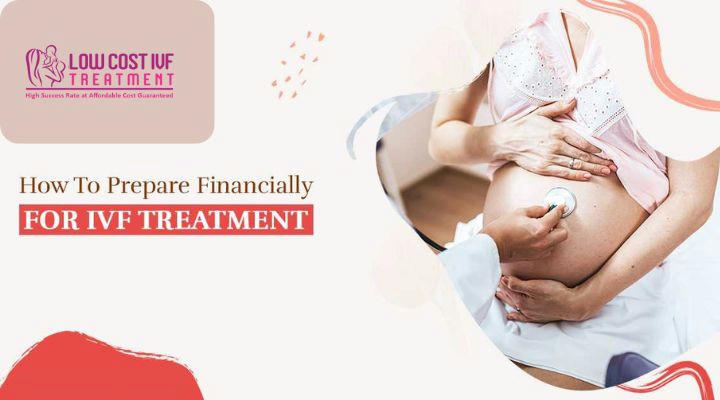Affordable IVF Options in the U.S. in 2025: Grants, Clinic Discounts, and Application Tips
In Vitro Fertilization|Ivf Grants
With the continuous rise in medical expenses in the U.S., In Vitro Fertilization (IVF) remains a significant financial challenge for many families. Fortunately, there are multiple support options available nationwide, including nonprofit aid, Low Cost Fertility Clinics, and various Ivf Grants that help reduce the financial burden.

🔍 IVF Costs: A Real Financial Challenge
The average cost of a single cycle of In Vitro Fertilization in the U.S. ranges from $12,000 to $20,000, excluding medications and additional treatments. For families needing multiple cycles, the total expenses can exceed $30,000. This price tag often deters many from seeking fertility treatment.
However, over the past few years, many Low Cost Fertility Clinics have emerged across the U.S., particularly in areas with high population density or medical research centers. Some clinics offer IVF packages starting at $6,000–$8,000 per cycle, with options for installment payments or discounts based on income.
Overview of National IVF Grants and Subsidy Programs
Several notable nationwide assistance programs are available, including:
- AGC Scholarship: Available to U.S. citizens aged 18+ diagnosed with infertility.
- Gift of Parenthood: Offers financial support for IVF, IUI, or egg freezing.
- Cade Foundation: Provides multiple annual grants up to $10,000.
- INCIID: Partners with clinics to fund IVF cycles for low-income households.
- Baby Quest Foundation: Supports more than 15 families each year with grants up to $15,000, sometimes including fertility medications.
These programs distribute over $500,000 in total each year to eligible applicants.
Targeted Support for Specific Groups
Some fertility aid organizations offer additional support for certain communities:
- Veterans may receive up to $5,000 through the Bob Woodruff Foundation;
- Cancer survivors can apply for family-building assistance from The Samfund;
- The Jewish community can seek help from Hasidah or the Jewish Fertility Foundation;
- Emergency service personnel (military, police, firefighters) may receive 35% treatment discounts at select clinics.
State-Level Special Programs
Several states offer regionally managed fertility funds or interest-free loan programs, typically run by local agencies or fertility foundations:
- California (Feit 4 KidZ Fund): Offers interest-free loans up to $15,000 for residents of Los Angeles or Ventura County; applicants must demonstrate the ability to repay the loan.
- New York: Operates a dedicated fertility assistance fund with an annual pool of approximately $1 million; most participating clinics prioritize patients who would otherwise be unable to afford treatment.
- Texas: Central Texas residents can apply for grants up to $12,000;
- Illinois (Hope Angels Program): Supports IVF funding for married couples in specific counties;
- Florida: Jacksonville-area residents may apply for fertility discounts up to $5,000.
Clinic Discounts and Medication Support 💊
The following clinics and support programs offer cost-saving options on treatment or fertility medications:
- CNY Fertility: Offers below-market-rate IVF cycles;
- HRC Fertility: Provides 40% discounts for military and veterans at multiple California locations;
- University of Iowa Clinics: Offers 50% discounts for specific patient groups on procedures;
- Compassionate Care Program: Gives 25–75% medication discounts based on income;
- Shared Risk Packages: Multi-cycle treatment plans with potential partial refund options.
Application Tips 📋
- Prepare full documentation early (e.g., tax returns, medical diagnoses, treatment estimates);
- Write a compelling personal story that highlights real needs and challenges;
- Monitor deadlines closely and apply as soon as possible;
- Combine multiple channels of support, such as clinic discounts and drug assistance.
Other Ways to Save 💡
In addition to the above, consider these cost-saving approaches:
- Participate in clinical trials conducted at teaching hospitals;
- Apply for clinic payment plans (typically 12 to 36 months);
- Use tax-advantaged HSA or FSA accounts for partial cost coverage;
- Choose clinics offering multi-cycle discounts.
Conclusion
While the cost of In Vitro Fertilization remains high, a growing number of American families are achieving their parenthood goals through a combination of fertility aid, clinic discounts, and state-specific support programs. From 2020 to 2023, over 200 families nationwide received meaningful financial help through these channels. For many who are considering treatment, effective planning and proactive applications can be an important step toward building the family they hope for. ❤️
